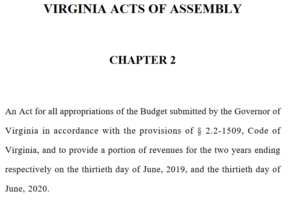 by Dick Hall-Sizemore
by Dick Hall-Sizemore
There is lot of wailing and gnashing of teeth going on in this blog and by the administration over the upcoming budget. Although there are some big-ticket budget items, that is nothing new; there always are. Even if the Democrats gain a majority in both houses, I don’t think there will be a tax increase. The doom-and-gloom scenarios don’t take into account a couple of issues related to revenue. First, the legislature last Session extended the sales tax to internet sales. Second, the legislature opted to conform the state’s tax code to the changes in the federal tax laws recently enacted by Congress.
Those changes, plus the good economy, are bringing in the revenue. The Secretary of Finance has reported that total revenues in September were $367 million more than the previous year’s September. On a fiscal year basis, general fund revenues to date are 8.2% higher than the previous fiscal year; the forecast was for an increase of 1.2%. This additional revenue will not be available to the Governor and General Assembly for the crafting of the next biennial budget, but they portend a healthy increase in the revenue forecast for the next biennium, which can be used in budget development.
The Secretary urges caution and cites uncertainties and has asked agencies to look for savings. But that is what Secretaries of Finance do. Ric Brown did it all the time. They need to tamp down the enthusiasm of state agencies, lobbyists, and legislators who are drooling over the prospect of significant new revenues. And until the last couple of years, every General Assembly, even though they were dominated by Republicans, was perfectly willing to spend every cent available.
Of course, a lot of that additional revenue will be a result of the federal tax changes. The General Assembly directed that the additional revenue attributable to those changes be identified and placed in a special fund, the Taxpayer Relief Fund. According to the legislation, the money in the Fund is to be used to “to effectuate permanent or temporary tax reform measures.” The annual estimated amount for the Fund is $450 million. I, of course, do not know if the Governor is going to include that amount in his revenue estimates available for the general fund, but, if I were a betting man, I would bet that money would no longer go into the Taxpayer Relief Fund but would rather be retained in the general fund.
The federal tax bill resulted in higher state taxes for some Virginians. If that additional money is indeed used for general budget purposes, rather than for tax reform measures, those individuals may consider that a tax increase. If so, they can blame the Republicans in Congress who enacted the federal tax bill and the General Assembly Republicans who were not able to enact a tax reform bill that shielded Virginians from those adverse effects of the federal bill.
Based on my past experiences, I can speculate on the budget games that are going on right now. The administration is carrying a conservative (i..e. high) estimate for additional Medicaid funding in its tracking spreadsheet. The revenue estimates are still fluid. The Board of Education has proposed SOQ changes totaling $950 million annually that is also being factored into the thinking, as well as the $300 million needed annually to rebenchmark the SOQ. Finally, there is the additional $94 million annually requested by VRS. Analysts at DPB are being discouraged from recommending any additional funding for agencies, sound and reasonable as they may be. Everyone is waiting for the elections to see who will be in charge.
After the elections tomorrow, the situation will begin to shake out. The Medicaid projection will come in and will likely be lower than anticipated. That will “free” up some money. The Governor will decide not to go along with all the BOE proposals, freeing up even more money. The Governor’s Policy Office will veto many DPB recommendations for new funding before the Governor even sees them. (DPB is no longer the point agency on budget matters; the Policy Office is.) Then, toward the end of November, the revenue estimates will be nailed down. Suddenly, there will be a significant amount of money “available.” Rather than going back to re-examine some of those worthwhile proposals that were put forth by the agencies and initially rejected, the Governor’s Policy Office will earmark the “extra” funding for their pet projects, as well as those proposed by interest groups in letters, meetings, and phone calls with the Policy Office and the Governor. The crush will come between Thanksgiving and the end of the first week in December when the budget has to be completed and sent to the printer. A lot of money will be “spent” in that period.


